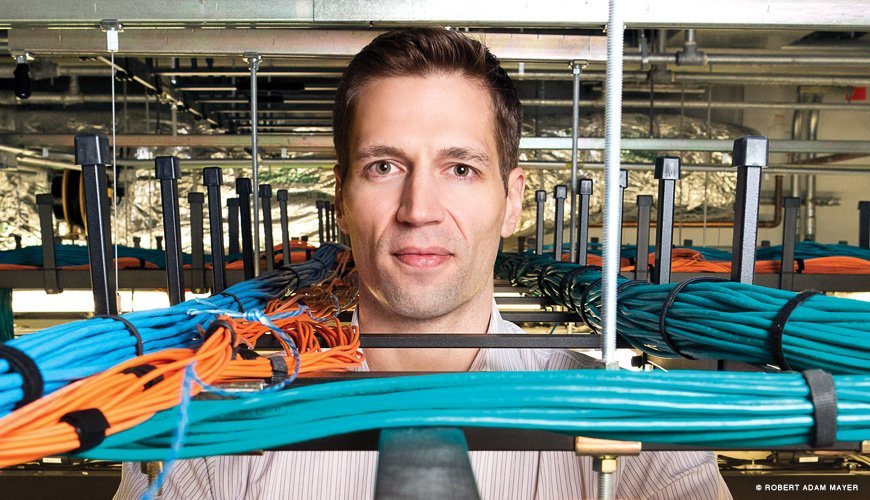Director of biomedical informatics at Mount Sinai’s Icahn School of Medicine in New York, Dr. Joel Dudley uses big data, genomics and a supercomputer called Minerva to build new models of disease, find new uses for drugs and—eventually—predict illness.
Q: YOU HAVE A PHD IN BIOMEDICAL INFORMATICS FROM STANFORD. WHAT DO YOU DO AT MOUNT SINAI?
A: I put two and two together. DNA’s digital. It’s the sheet music. And the notes, in effect, are mRNA [molecules that carry genetic info from DNA to the ribosome]. They tell you the degree to which a gene is on or off in a cell. It’s like Match.com for disease and drugs.
ONCE YOU HAVE GENOMIC DATA AND DISEASE OR DRUG DATA, WHAT HAPPENS?
You want to know how a change from one gene in a cell leads to changes in lots of other cells.
WHAT’S REVOLUTIONARY ABOUT YOUR WORK?
We don’t have a learning healthcare system. When Joel Dudley walks through a door to a new doctor, other than my family history and what’s in their head, they start from scratch. They don’t say, “Well, we’ve collected all this information on Joel, and who does he look like that we’ve seen before, and what happened to those people?” Why don’t we do that? Google and Amazon sure look at your cookies in your web browser and say, “Who looks like this person and what kind of products do they like to buy?”

HOW DOES THE DATA YOU COLLECT HELP YOU IMPROVE HEALTH?
We have the genomic data that says, when diseases manifest, these are the changes we’re seeing at the genomic level. And we have every gene in the genome, so no matter what the disease is, we can compare them and ask: Based on all these measures, how similar is this patient to the next patient to the next patient?
FOR EXAMPLE?
There are a lot of cases where Alzheimer’s disease and skin diseases look similar at the genomic level. And you’re thinking, Why the hell is that happening? The question the data pose is: Could we learn about Alzheimer’s from skin diseases?
ARE THERE ANY CONCRETE ADVANCES YOU’VE MADE USING THIS TECHNOLOGY?
An antipsychotic drug that could be used for small-cell lung cancer. We did a pattern-matching approach, like Netflix does to suggest movies to users, and then systematically matched the drugs to the disease.
YOU’RE PASSIONATE ABOUT YOUR WORK. ARE THERE REASONS BEYOND INTELLECTUAL CURIOSITY?
Part of the reason I work in biotech is because I have Crohn’s disease. I have two siblings with Crohn’s. It’s profoundly complex at the molecular level, and we don’t understand the underlying mechanisms all that well yet. I feel like if I have the ability to change this, then I owe it not just to myself, but to others in my family and beyond who suffer.

WHAT’S THE NEXT STEP?
We’re launching a new center here, the Center for Precision Wellness. We need to understand an individual’s trajectory.
AN INDIVIDUAL’S TRAJECTORY?
Your health course is like a topographical map. It’s not like there’s this linear trajectory. There are many, many possible states of health and disease. What we want to figure out is what is the optimal healthy path for you, and how do we keep you from these points of no return, these cliffs.
ARE MOUNT SINAI’S PRECISION WELLNESS SERVICES AVAILABLE YET?
There are some tests underway with Medicaid and Medicare populations. But for others, for now, it’s not going to be cheap and it’s not going to be covered by insurance.
For more information, contact [email protected], precisionwellness.org.







